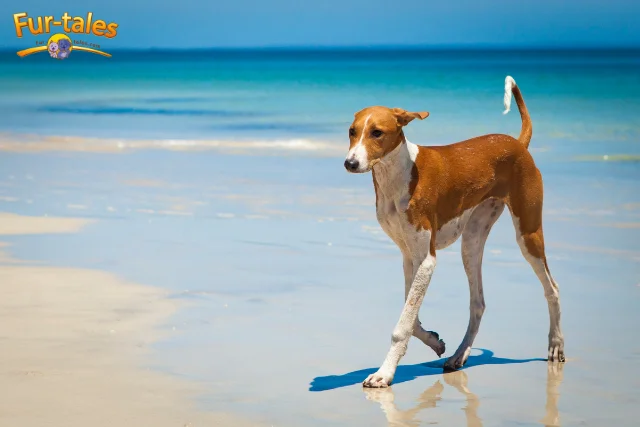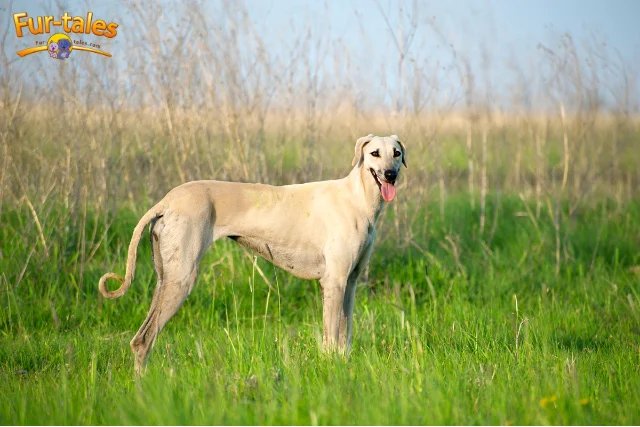
7 African Dog Breeds That Are Both Strong and Striking
Africa is home to some of the most fascinating and unique dog breeds in the world. Known for their resilience, intelligence, and loyalty, these African dog breeds have evolved to thrive in some of the continent’s most challenging environments. From desert sands to savannah grasslands, these dogs are not only physically strong but also striking in appearance. Whether you’re curious about their history, considering one as a pet, or simply interested in their remarkable traits, this guide will introduce you to seven incredible African dog breeds that deserve recognition.
1. Basenji – The Barkless Wonder
The Basenji is perhaps the most famous of all African dog breeds, originating from Central Africa, particularly the Congo region. Often referred to as the “barkless dog,” Basenjis do not bark like other breeds. Instead, they produce a unique yodel-like sound known as a “baroo,” which is both endearing and unusual.
Key Traits
- Size: Small to medium, typically weighing 20–24 pounds
- Coat: Short, fine coat with colors ranging from chestnut to brindle
- Temperament: Independent, intelligent, and curious
- Distinctive Feature: Clean and cat-like grooming habits
Basenjis were originally bred as hunting dogs, prized for their speed, keen eyesight, and ability to track small game. Their energetic nature makes them great companions for active families, but their independent streak can make training a bit of a challenge. Positive reinforcement and patience are key when raising this breed.
2. Boerboel – The South African Guardian
The Boerboel, meaning “farmer’s dog” in Afrikaans, is a powerful mastiff-type breed from South Africa. Historically used to guard homesteads and farms, Boerboels are known for their immense strength and protective instincts.
Key Traits
- Size: Large, weighing 150–200 pounds
- Coat: Short and dense, often seen in shades of fawn, brown, or brindle
- Temperament: Loyal, protective, and confident
- Distinctive Feature: Muscular build and strong jaw
Boerboels are affectionate with their families but wary of strangers, making them exceptional guard dogs. However, their size and strength require experienced handling and early socialization. A Boerboel thrives in homes where they can be both loved and trained to channel their protective nature appropriately.

3. Azawakh – The Elegant Desert Hound
Native to West Africa’s Sahel region, the Azawakh is a sighthound known for its incredible speed and graceful appearance. Traditionally bred by nomadic tribes such as the Tuareg for hunting gazelles and guarding camps, this breed is both elegant and hardy.
Key Traits
- Size: Medium to large, weighing 35–55 pounds
- Coat: Extremely short and fine, in various colors and patterns
- Temperament: Reserved, loyal, and agile
- Distinctive Feature: Slim frame with long legs built for speed
Azawakhs are affectionate with their families but can be aloof with strangers. They excel in athletic activities like lure coursing and need regular exercise to stay happy. Their striking appearance and dignified demeanor make them a favorite among enthusiasts of rare breeds.

4. Africanis – The Indigenous All-Rounder
The Africanis is a term used to describe the native dogs of Southern Africa. These dogs are not a single standardized breed but rather a landrace—dogs that have naturally adapted to the African environment over thousands of years.
Key Traits
- Size: Medium, averaging 50–60 pounds
- Coat: Short and smooth, with a variety of colors and patterns
- Temperament: Loyal, adaptable, and intelligent
- Distinctive Feature: Strong immune system and hardy constitution
Africanis dogs are known for their versatility, used historically for herding, guarding, and companionship. They are low-maintenance and thrive in outdoor settings, making them well-suited for rural or active lifestyles. Their natural resilience also means fewer health problems compared to many purebred dogs.
5. Sloughi – The North African Greyhound
The Sloughi, also known as the Arabian Greyhound, originates from North Africa, particularly Morocco, Algeria, and Tunisia. Revered for centuries by Berber and Bedouin tribes, this sighthound was used for hunting game such as hare and gazelle in desert terrains.
Key Traits
- Size: Medium to large, weighing 40–60 pounds
- Coat: Short and smooth, typically fawn-colored
- Temperament: Sensitive, elegant, and devoted
- Distinctive Feature: Graceful build and soulful eyes
Sloughis are known for their gentle demeanor and deep bond with their families. They require regular exercise to satisfy their high energy levels and are best suited for owners who appreciate their quiet and sensitive nature.

6. Rhodesian Ridgeback – The Lion Hunter
Although developed in Southern Africa, particularly Zimbabwe (formerly Rhodesia), the Rhodesian Ridgeback has roots in indigenous African dogs crossed with European breeds. Famous for the distinctive ridge of hair along its back, this breed was historically used to track and corner lions during hunts.
Key Traits
- Size: Large, weighing 70–85 pounds
- Coat: Short and sleek, typically wheaten in color
- Temperament: Loyal, fearless, and athletic
- Distinctive Feature: The ridge of hair running opposite along the spine
Rhodesian Ridgebacks are versatile companions—courageous hunters, devoted family dogs, and excellent protectors. They require firm but loving training and plenty of exercise, making them ideal for active families or individuals with experience handling large breeds.

7. Coton de Tulear – The Charming Companion
Originating from Madagascar, the Coton de Tulear is a small but delightful breed known for its cotton-like coat and cheerful personality. Unlike some of the more rugged African breeds, the Coton de Tulear was bred as a companion dog for nobility.
Key Traits
- Size: Small, weighing 8–15 pounds
- Coat: Soft, fluffy, cotton-like coat in white or tri-color patterns
- Temperament: Affectionate, playful, and social
- Distinctive Feature: Cheerful expression and friendly demeanor
Despite their diminutive size, Cotons are intelligent and enjoy being part of family activities. They are well-suited for apartment living and get along well with children and other pets, making them perfect for households seeking a low-shedding companion.
Why African Dog Breeds Stand Out
African dog breeds are incredibly diverse, reflecting the varied landscapes and cultures of the continent. They range from hardy working dogs like the Africanis to elegant sighthounds like the Azawakh and affectionate companions like the Coton de Tulear. What unites them is their adaptability and resilience—traits honed over centuries of living alongside humans in challenging environments. Many of these breeds remain rare outside Africa, making them highly sought after by enthusiasts looking for unique canine companions.

Caring for African Dog Breeds
While each breed has unique needs, there are some general tips to keep in mind when caring for African dog breeds:
- Exercise: Many of these dogs are highly active and require daily physical and mental stimulation.
- Training: Consistency and positive reinforcement are key, especially for independent or protective breeds.
- Climate Considerations: Some breeds, like the Sloughi and Azawakh, are sensitive to cold due to their thin coats.
- Socialization: Early and ongoing socialization helps ensure well-rounded, confident dogs.
- Health: Landrace breeds like the Africanis tend to be hardy, but regular vet checkups are still essential.
FAQs About African Dog Breeds
Are African dog breeds good family pets?
Yes, many African dog breeds are excellent family companions. Breeds like the Coton de Tulear and Basenji are affectionate and adaptable to family life, while others like the Boerboel and Rhodesian Ridgeback need more experienced handling but can be incredibly loyal.
Are these breeds rare in the United States?
Some, like the Basenji and Rhodesian Ridgeback, are relatively well-known and recognized by the American Kennel Club (AKC). Others, like the Azawakh and Sloughi, are much rarer and may require seeking specialized breeders or rescue organizations.
How much exercise do African dog breeds need?
Most African dog breeds are active and need regular exercise—anywhere from 30 minutes to two hours daily, depending on the breed. Sighthounds like the Azawakh and Sloughi thrive with running opportunities, while Boerboels and Ridgebacks enjoy structured activities.
Do these dogs handle cold weather well?
Many African breeds have short coats and are accustomed to warm climates, meaning they may need extra protection in cold weather, such as dog sweaters or indoor living during harsh winters.
Which African dog breed is easiest to train?
Breeds like the Coton de Tulear are generally easier to train due to their eagerness to please. More independent breeds like the Basenji or protective ones like the Boerboel may require patient, consistent training from an experienced owner.
Image Source: Canva
